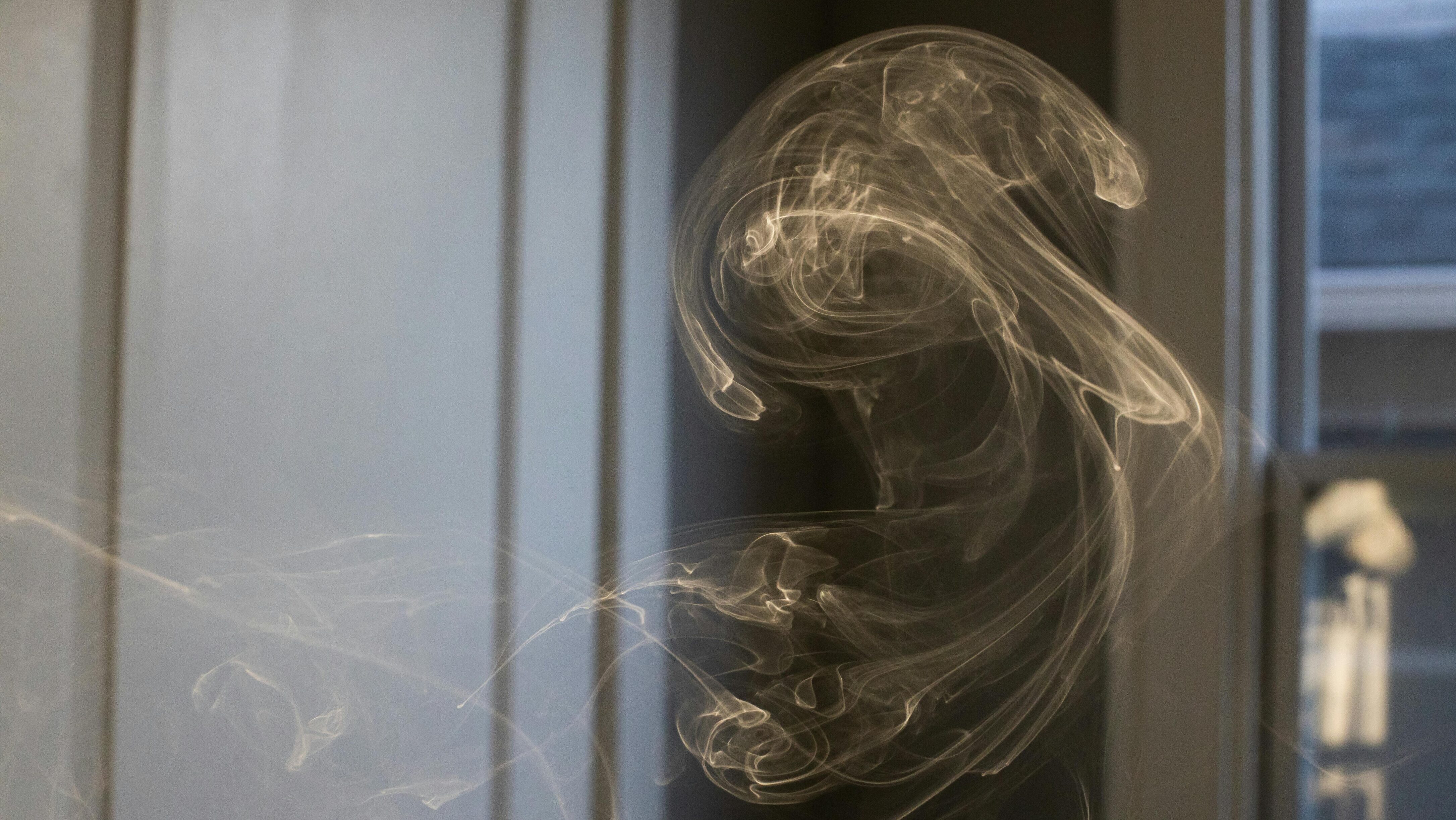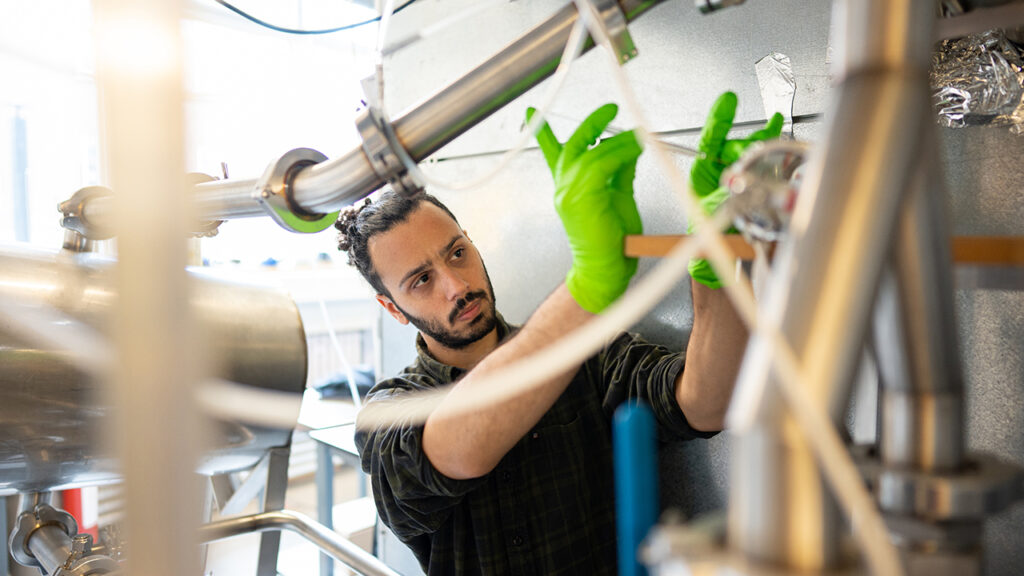
In conversation with Aristeidis Voliotis: Impacts of air pollution on human health
How does air pollution impact our health? And what does a scientist do to look for answers? We asked Dr Aristeidis Voliotis, a research scientist at the National Centre for Atmospheric Science and University of Manchester, about their research in air pollution.
Air pollution and human health
Air pollution is the sum of the gaseous and particulate components in the air that are harmful to human health. Air pollutants can be directly emitted from a range of natural sources (such as plants, pollen, and bacteria) or anthropogenic sources (such as traffic, wood burning, and cooking).
Air pollutants can also be secondary – formed or modified in the atmosphere after emission. Each of these sources emits hundreds or even thousands of different pollutants that contribute to our daily exposure.
Air pollution affects human health in multiple ways and can impact every organ in the body. Scientists are working to understand which sources of pollution are the most harmful or exactly how these pollutants cause damage in the body.
Inhaled gaseous and particulate pollutants can interact with the nasal cavities, translocate to the brain via the olfactory nerve, and deposit in the lungs. Gases or particles small enough can enter the bloodstream and affect the heart and other downstream organs. There’s growing evidence linking air pollution to a range of health issues, including respiratory diseases, heart problems, and even neurodegenerative conditions.
– Dr Aristeidis Voliotis, research scientist at the National Centre for Atmospheric Science and University of Manchester
Studying the impacts of air pollution
Based at the University of Manchester, Aristeidis studies air pollution from real-world sources with the help of human volunteers, and a variety of scientific instruments.
“We have the capability to generate pollutants from real-world sources such as a wood stove or a car engine, and introduce them into a large atmospheric simulation chamber. Simultaneously, we use a wide range of scientific instruments to measure, in great detail, the physical and chemical characteristics of the gaseous and particulate pollutants. Working closely with toxicologists, immunologists, and respiratory physicians, we expose human volunteers or human lung cells to these pollutants. By analysing the biological samples we collect (e.g., blood, tissue) for selected biomarkers, we aim to understand how the human body responds to air pollution,” he explains.

Aristeidis’ background is in environmental science and chemistry. And where did the passion for air pollution come from? The answer – pottery.
“During my undergraduate studies, I conducted a research project on emissions from pottery manufacturing in a small studio where a friend’s mother worked. I was surprised to find that particle concentrations in the room during the ceramic firing process were orders of magnitude higher than background levels. This is when I thought: That can’t be good for you,” he reflects.
The undergraduate degree was followed with a master’s degree in environmental chemistry where Aristeidis used modelling techniques to study how different pollutants get into our lungs. Meanwhile, his research during his PhD shifted back to atmospheric science. He says:
“I was studying how different pollutants interact with each other and undergo transformations in the atmosphere; processes that can significantly impact the physicochemical properties and thereby their potential impacts on health. Later, I became increasingly interested in toxicology. I was awarded a Discipline Hopping Award, which enabled me to work part-time at a toxicology group in the Division of Immunology, Immunity to Infection, and Respiratory Medicine at the University of Manchester. At the same time, I took a central role in the first human exposure study that was conducted at the University of Manchester that solidified my current career trajectory.”
And what’s next for Aristeidis? From exploring how cooking impacts our lungs in his Manchester facility, to collaborating with British Heart Foundation to look at how burning plastic waste affects the health of people living in rural Indonesia, Aristeidis is excited to broaden his research.
“Looking ahead, I’m really interested in exploring how emerging sources of chemical pollution, such as cleaning products, paints, pesticides and so on, can be transformed in the atmosphere by their interactions with other pollutants and how they might impact our health,” he says.
Air in our homes
When we think about air pollution, we often focus on outdoor air quality, even though research urges us to consider the impacts of indoor air pollution on our health. Many everyday activities in our homes – such cooking, cleaning, and burning candles or incense, can be surprisingly significant sources of air pollution.
What I really wish people understood is that air pollution isn’t just an outdoor problem, or something limited to industrial areas. It’s often generated right inside our homes. Being aware of the potential sources can help people make small but meaningful choices to reduce their exposure.
– Dr Aristeidis Voliotis, research scientist at the National Centre for Atmospheric Science and University of Manchester.
One simple but effective way to reduce exposure is to ventilate your home during these activities as studies have shown that proper ventilation can significantly lower the concentration of indoor pollutants. That said, air quality varies significantly depending on location, time of day, season, and surrounding activities. Though opening a window for ventilation might be helpful in most situations, it could bring more pollution indoors if there is a wildfire nearby or heavy traffic outside.
“Cleaning products can emit substantial amounts of air pollutants, yet they are often associated with feelings of cleanliness, freshness, or comfort. So, this perception doesn’t align with the reality of their health impacts. The real challenge is that, scientifically, we still don’t have clear answers. We don’t know yet whether, for example, emissions from cleaning products are more or less harmful than those from cooking. So, while public awareness is crucial, we also need more research to guide both individual behaviours and policy decisions,” Aristeidis says.
